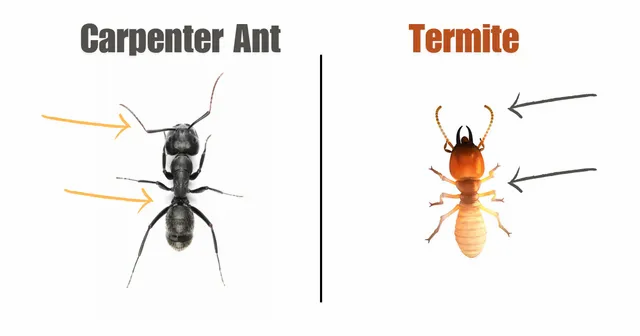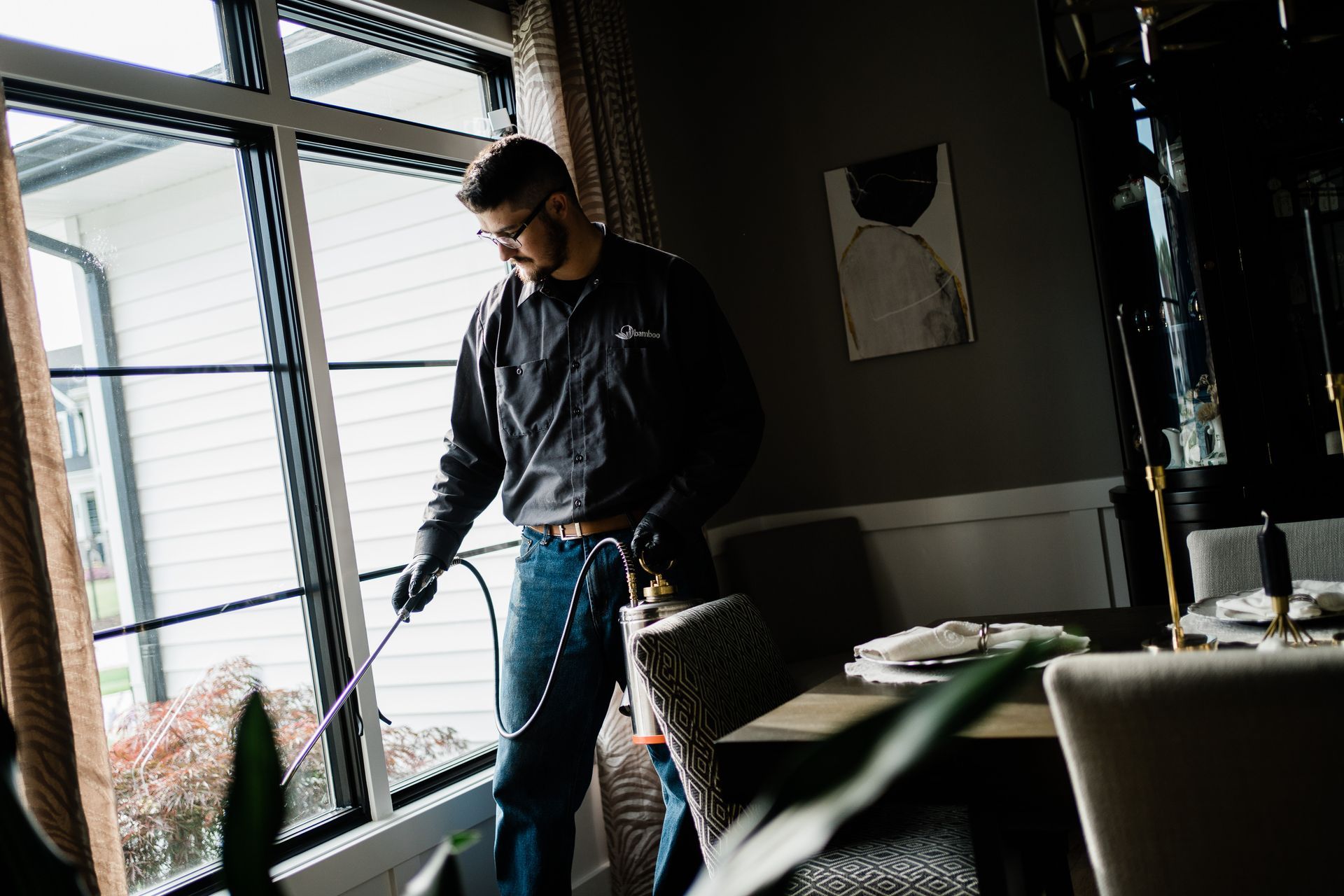Carpenter Ants vs Termites
Carpenter Ants vs. Termites: What You Should Know
If you’re wondering about the key differences between carpenter ants and termites, we’ve got you covered. While they share some similarities, especially in the way they damage wood, there are distinct differences in their appearance, behavior, and how to handle an infestation. Confusing the two can lead to the wrong approach in dealing with them, so understanding these differences is crucial. If you’re unsure which pest is causing trouble, it’s always a good idea to contact a pest control professional before the problem gets out of hand and results in serious property damage. Let’s take a closer look at what sets carpenter ants and termites apart.
Key Differences in the Size, Shape, and Color of Carpenter Ants vs. Termites
Though both carpenter ants and termites share the characteristic six-legged body, there are some clear visual differences that help set them apart. Let’s break down the easiest ways to tell them apart based on their appearance:

- Body Shape and Size – One of the first things you’ll notice is the difference in the shape of their bodies. Carpenter ants have narrow waists that create three distinct body segments, while termites have a more uniform, straight-bodied appearance with just two segments. Carpenter ants are also generally larger in size than termites.
- Antennae – Carpenter ants have bent, elbowed antennae that stick out from the head and then angle forward. On the other hand, termites have straight, bead-like antennae that are uniform in shape and often point downward.
- Wing Differences – If you encounter winged varieties of either insect, this is another key way to differentiate between the two. Carpenter ants have two wings on each side, with the front wings being noticeably larger than the back ones. Termites, however, have four wings that are all the same size, giving them a more symmetrical wing structure.
- Color Variations – Carpenter ants tend to be dark in color, with shades ranging from black and brown to red, depending on the species. Termites, on the other hand, have a more translucent appearance with colors that can range from dark brown to pale cream or even milky white, depending on their role within the colony and their growth stage.
So, while both carpenter ants and termites might share some similar traits, their differences in body shape, antennae, wings, and color make it easier to tell them apart if you know what to look for.
How Carpenter Ants and Termites Behave Differently
A major difference between carpenter ants and termites is how they interact with wood. While both are attracted to it, their behavior toward wood is where the confusion often begins for homeowners.
Termites Eat Wood
Termites actively consume wood, making them more destructive than carpenter ants. These insects rely on wood as their primary food source, meaning they’ll chew through anything from support beams to flooring if left unchecked. This can lead to significant structural damage over time. If you notice what looks like water damage but can’t trace it back to an actual water source, it might be a sign that termites are eating away at the wood, causing floors or ceilings to sag.
Carpenter Ants Nest in Wood
Carpenter ants, on the other hand, don’t eat wood for nourishment. Instead, they burrow into wood to build their nests, which results in some damage but nowhere near the extent of what termites can cause. These ants are more likely to seek out human food, which is why you might spot them in your kitchen. The wood provides them with shelter, but it’s not their food source.
Detection Differences
Finding these two pests requires different strategies. Carpenter ants are generally easier to spot since they leave their nests in search of food, often leaving behind small piles of sawdust-like material called frass. Termites, however, stay hidden within their nests and rarely venture out, making them harder to detect. This secretive behavior, combined with their wood-devouring tendencies, makes termites far more dangerous in the long run if not dealt with promptly.
In short, while both insects can cause problems, termites’ habit of eating through wood makes them a much more serious threat to your home than carpenter ants, which tend to cause more minor damage.

How to Spot an Infestation: Carpenter Ants vs. Termites
Identifying whether you have an infestation of carpenter ants or termites can be tricky, but there are a few key differences that can help you distinguish between the two. If you’re unsure, it’s always best to contact a pest control expert, as both pests can cause damage to your home if left unchecked.
- Sawdust and Frass
One clear sign of carpenter ants is the presence of frass, which looks like fine sawdust. Carpenter ants burrow into wood to create nests and push this waste material out of their tunnels, often leaving small piles of frass near the entrance points. Termites, however, don’t leave behind wood shavings since they consume the wood entirely, making this a helpful clue in determining which pest you’re dealing with.
- Mud Tunnels
Termites are known for building mud tunnels or tubes, which serve as protective pathways for their workers as they search for food. These tunnels can often be found along the exterior foundation of your home or near wooden structures, acting as a direct route for termites to travel between their underground nest and your home’s wooden framework. Carpenter ants don’t create these mud tubes, so spotting them is a sign of termite activity.
- Wood Damage
Termites completely consume the wood they infest, leaving behind hollowed-out sections that can cause significant structural damage. On the other hand, carpenter ants carve out tunnels within the wood, but they don’t eat it. If you notice wood that looks like it’s been chewed through or has smooth, sculpted tunnels inside, it’s more likely to be carpenter ants. Termite damage, by contrast, often appears as fragile or crumbling wood, since they devour it from the inside out.
Dealing with Carpenter Ants and Termites
If you suspect an infestation of either carpenter ants or termites, it’s important to reach out to a pest control professional as soon as possible. Termites, in particular, can cause serious structural damage to your home if not addressed promptly. In the construction and remodeling world, termites are known for causing delays, as they often require extensive repairs before any new work can begin.
While carpenter ants typically cause less structural damage than termites, they can still become a major problem if their colony is allowed to grow unchecked. Over time, their burrowing can weaken wood, and their presence may also pose health risks to your household. It's best not to let these pests disrupt your home and family life.
If you're in Kirkland, WA, contact
Kirkland Pest Control By Bamboo to help you address these issues before they escalate. Our expert team is ready to tackle infestations and help safeguard your home. Be sure to also explore our FAQ guide on common household pests for more tips and insights.
For service call: (425) 217-1379
Copyright © 2024 - Kirkland Pest Control by Bamboo All Rights Reserved
